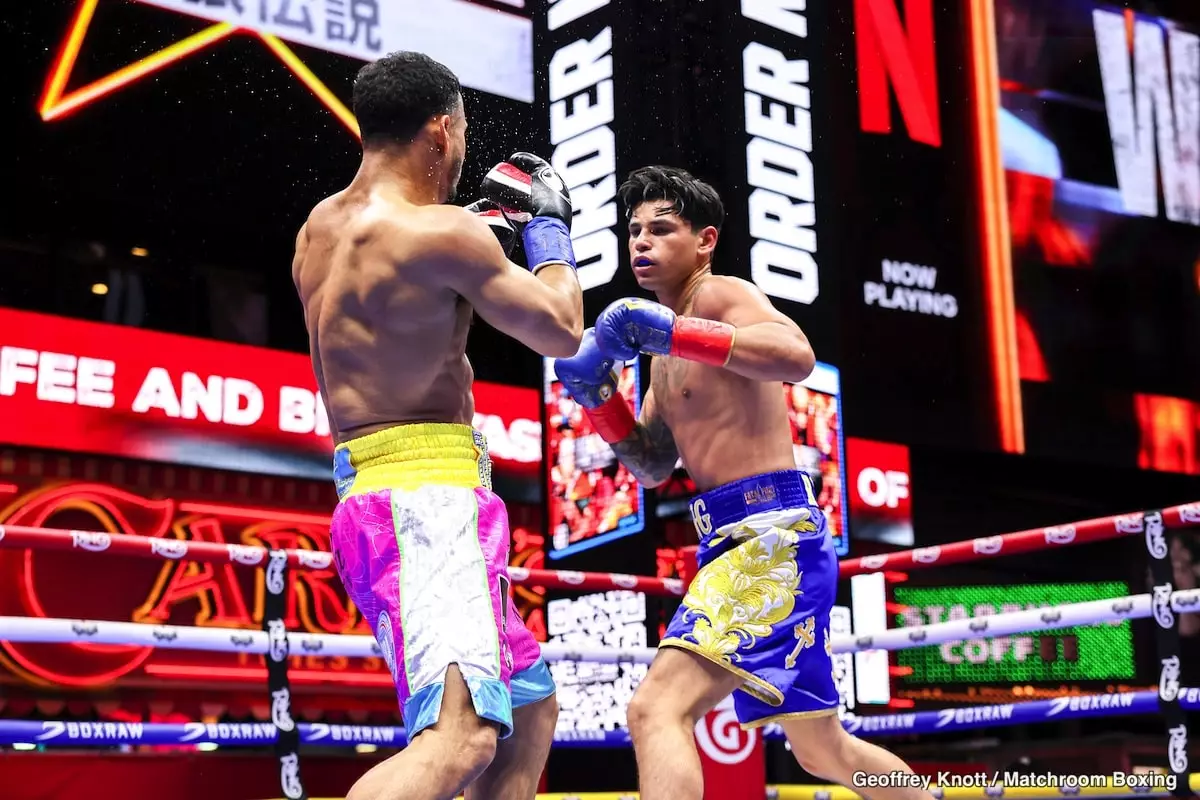In a striking contest that unfolded in the electrifying atmosphere of Times Square, Rolando ‘Rolly’ Romero showcased an incredible display of strength against Ryan Garcia, leaving an indelible mark on the dynamics of the ring. Nonito Donaire, a seasoned fighter, emphasized how Romero’s ‘GGG-like’ power fundamentally shifted Garcia’s approach and left him hesitant to engage. The staggering impact of Romero’s hands fundamentally altered the fight’s rhythm, showcasing how a fighter’s physical prowess can shift strategic paradigms in boxing matches.
Drawing comparisons to Gennady Golovkin, Donaire highlights that the overwhelming power exhibited by Romero forced Garcia to adopt a more cautious demeanor. Garcia, often known for his confident exchanges, was compelled to reevaluate his strategy after being dropped in the second round. This sudden vulnerability showcased how critical physicality and raw power are in influencing mental fortitude within the ring. Such moments not only define the outcome of fights but also redefine how fighters approach their opponents, particularly when faced with exceptional strength.
Understanding the Impact of PED Controversies
The dialogue surrounding the match inevitably navigates into the complex terrain of performance-enhancing drugs (PEDs), a topic that casts a long shadow over boxing. Donaire’s observations on Garcia’s past positive test for Ostarine raise crucial questions about the integrity of fighter performances. Boxing fans and analysts alike have speculated about the correlation between Garcia’s performance against Devin Haney and his subsequent lackluster showing against Romero, suggesting that PEDs could have altered his physical resilience and confidence.
Garcia’s appearance and demeanor were markedly different in both fights, a detail not lost on discerning fans. He appeared more formidable and self-assured in the ring against Haney, prompting speculation about the effects of Ostarine on durability and performance levels. The uncertainties surrounding such substances penetrate deeper into boxing’s ethos, challenging notions of fair competition and talent. Donaire’s candid reflections invite us to question the true nature of athletic success in a sport fraught with controversy, reminding us of the complexities that lie beneath each knockout.
Romero’s Evolution at 147: A Natural Progression
As Romero settles into the welterweight division, a transformation in his physicality has sent waves through the boxing community. Donaire astutely comments on how this level of strength stems from his ability to fight without the extreme weight cuts that often drain fighters in lower weight classes. Romero’s evolution into an “abnormally strong” contender is both a natural progression and a tactical advantage. His refusal to engage in detrimental weight cutting elevates his strength to an almost primal level, making him a daunting opponent for any fighter.
Such a comprehensive physicality allows Romero to adopt an aggressive style without the limits imposed by significant weight loss. Fighters subjected to precarious weight management often step into the ring hampered by fatigue and diminished power. In contrast, Romero’s robust conditioning gives him the confidence to assert his will within the ring, compelling opponents like Garcia to rethink their approach—a narrative that speaks volumes about the importance of strategic physical management in combat sports.
Future Match-Ups: Strategic Considerations for Romero
Donaire’s insights tease the exciting potential for Romero in future bouts, particularly against high-profile fighters like Gervonta ‘Tank’ Davis and IBF/WBA welterweight champion Jaron ‘Boots’ Ennis. The conversation centers on whether Romero’s unique fighting style, marked by unpredictability and raw power, can translate into success against formidable opponents with diverse skill sets.
While Donaire acknowledges the potential for a rematch against Davis, he articulates that Romero must negotiate the conditions that align with his strengths. The prospect of agreeing to a catchweight that would favor an opponent appears unlikely, especially after his triumph over Garcia. In this rapidly shifting landscape of weight classes and match negotiations, Romero’s ascent may enable him to command advantageous terms, and potentially result in lucrative showdowns that capture public fascination.
As the boxing world continues to buzz with speculation, Romero stands on the precipice of stardom, with his recent victory acting as a pivotal moment in his career. The road ahead is fraught with uncertainties and opportunities, where his heavy-handed style remains a critical factor in orchestrating his path forward. The intrigue around his bouts promises manifold narratives—each punctuated by the discourse of strength, style, and competitive edge in modern boxing.


Leave a Reply